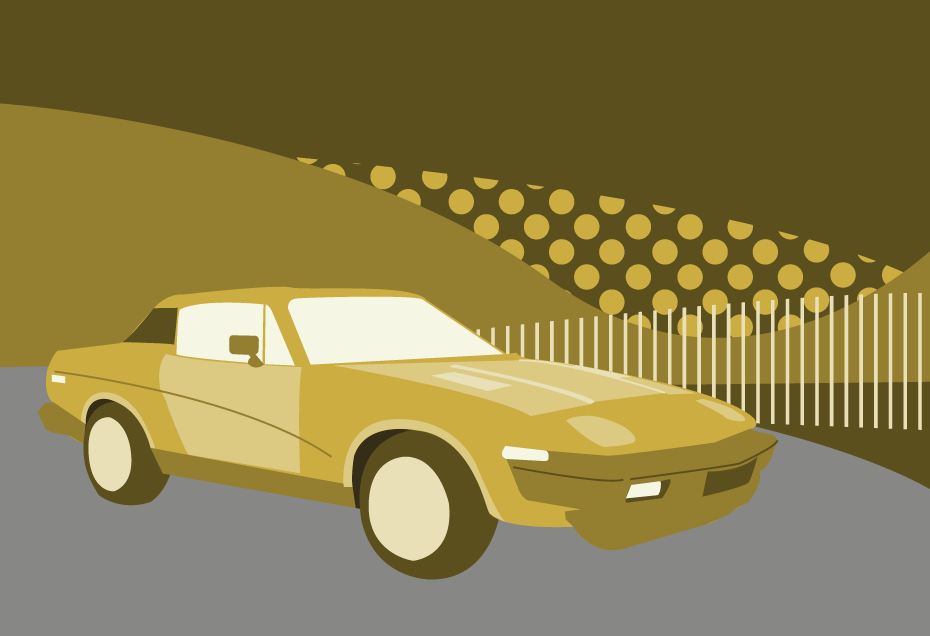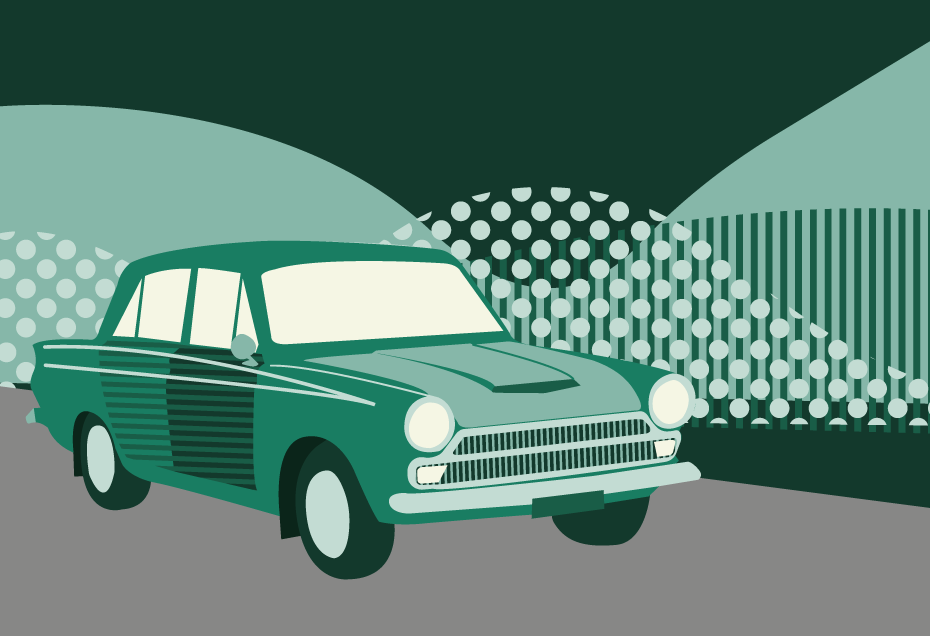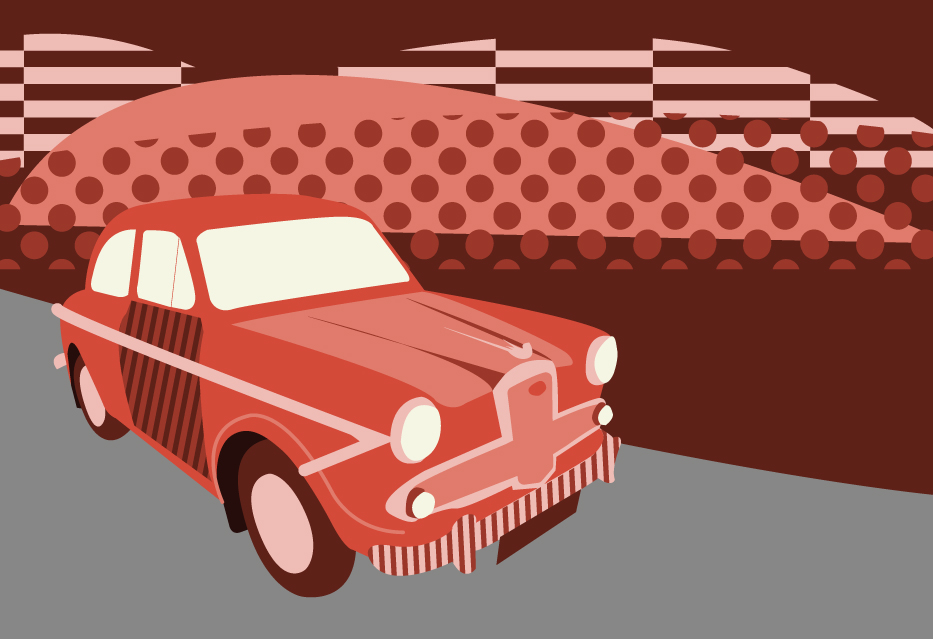When it first appeared a scarcely believable 40-plus years ago, the TR7 caused a stir among the motoring press – its wedge shape dividing opinion between modernists and traditionalists.
Its design was a world away from the more traditional British sportscar shape of the 1969 TR6 it replaced, round headlights and wood interior giving way to a wedge shape with pop-up headlights, a plastic dash and those famous tartan seat covers.
While adverts proclaimed it “the shape of things to come”, Time magazine and Jeremy Clarkson have dubbed it one of the 50 worst cars of all time and “one of the ugliest cars ever made” respectively.
Yet its bigger-engined brother, the eight-cylinder TR8, was named the Motor Trend Car of the Year and is now said to have strong collecting credentials.
Let’s take a look at the Triumph TR7, an increasingly rare 70s sportster.
Driving a wedge between friends
Triumph trusted the design of its all-new sportscar to Harris Mann, who clearly had a thing at the time for wedges having also penned the similarly controversial Princess saloon.
The company wanted a car that would do well in the US and, given that the UK launch was delayed until 1976 because of demand from across the pond, you could argue they got it right.
The Triumph TR7’s pop-up headlights were certainly all the rage at the time, featuring on more exotic motors like the Ferrari 308 and, later, plenty of others from Toyotas to Lotus to Lancias.
And it wasn’t the only sports wedge on the market – the Fiat X1/9 and Lotus Esprit proved that Triumph weren’t alone in abandoning 60s curves for modernist angular lines.
Launching as a fixed-head coupe only meant Triumph missed out on the lucrative convertible market to rivals MG, although you could still buy a Spitfire at the time.

The lack of a V8 engine until the TR8 came along also meant that the TR7 was less powerful than the TR6 it replaced, with a fairly modest 90bhp and a top speed of 110mph.
Produced initially at Speke in Liverpool, the car suffered from poor build quality – hardly unique in British cars of the time – and labour disputes and strikes saw production move to Coventry in 1978. Despite its problems, the car was a practical enough daily driver and sold well.
Motor Sport Magazine test drove one of the Coventry cars – now producing 105bhp – and that distinctive shape was still causing discussion:
“Appearance? That’s very much a matter of opinion. I’ve yet to meet anybody who likes the very heavy treatment at the tail end of Harris Mann’s wedge design, though most people like the nose, with its commendably quick acting pop-up headlights.”
Adrian Flux Classic Car Insurance
But reviewers were unsure what to make overall of the car that drove like a saloon but looked like a sports car: “In general appointments and comfort the TR7 comes much nearer to saloon car quality than most sports cars and in that respect is easy to live with. Unfortunately its general performance and behaviour is more akin to a soft saloon car than the generally accepted idea of a sports car; it lacks the crisp sparkle, the joie de vivre so essential to add character. True, it accelerates from 0-60 m.p.h. in a little over 10 sec. and will push 110 m.p.h., but its manner of doing so is not very inspiring. It’s a very buzzy, fussy sounding car when coerced into working hard, the flat-sounding underbonnet orchestra accompanied by transmission whine, especially in second gear.
“I still don’t know quite what to make of this strange motor car. It is neither a saloon car nor a sports car in behaviour, yet it has only two seats in a very attractive and comfortable interior. It is an easy enough car to drive when pottering around and reasonably quiet when so driven, but drive the TR7 like the sports car Leyland proclaim it to be and it becomes fussily unpleasant. For £4,995.90 the enthusiastic driver would be far better off with an RS 2000 or a Mirafiori Sport, plus a bit of change. “Posers” might choose the TR7.”
That famous tartan interior was introduced in 1977 along with a range of other changes to try to improve the car’s reputation – including an optional five-speed manual, a catalytic converter, lowered ride height and optional sunroof.

When the convertible finally came along, styled by Michelotti, it featured a more slanting windscreen and bolder A-pillars, along with a few minor interior revisions. The US got the drophead coupe first, in 1979, with the domestic market getting the chance to buy the new car a year later.

But it was a bigger engine the TR7 had been crying out for and, when British Leyland opted to fit its 3.5litre V8 as an option on the TR7 and in the TR8, the car was transformed.
It was even dubbed the “re-invention of the sports car” no less by Car and Driver magazine.
Output was up to 135bhp, increasing the top speed to 118mph and 0-60 in 8.5 seconds. The engine also produced a satisfying growl, and the bonnet bulge gave the car a more muscular look.
The TR8 also had power steering, twin exhausts, twin carbs and alloy wheels, and was greeted with increasingly rave reviews in the US, where the vast majority of cars were sold. Indeed, only 35 true TR8s are believed to have been made for the UK market. Most UK-based V8s that remain today are TR7V8s rather than genuine TR8s.
Like our illustration of the Triumph TR7 at the beginning of the article?
Download a free high-quality poster version here.
This review from Car magazine shows just what we missed: “I asked myself more than once the deadly serious question: ‘would I spend my own hard-earned money on a TR8?’ This is not a fantasy. This car is expensive by American standards, and yet no more than a Mazda RX7 or a Datsun 280Z, and a lot cheaper than comparably equipped GM Corvette. And all round it will outperform them all. ‘Decidedly yes’, I answer each time.’ In conclusion, ‘When the TR8 is launched in Britain next year there will be nothing in its class to touch it, save perhaps the Porsche 924. But don’t expect to be able to buy it for what the Americans pay, even though the British model (without the emission control equipment) will be considerably cheaper to make…”
As well as good reviews, the TR8’s ventures into motorsport excited the public, with rally and SCCA successes. But Leyland, which was increasingly in turmoil, was unable to capitalise on a fine car and only about 2,750 genuine TR8s were produced, compared with 112,368 TR7s. Only about 50, some of which are imports, are thought to remain in the UK, making the cars increasingly collectable.
Love it or hate it, the TR7 was Triumph’s all-time best-selling car, and the motor that dragged the British sports car into the modern age.

And it’s just possible that we haven’t seen the last of the TR name. The marque is still owned by BMW as part of the deal that saw the German company take over the Mini and Riley brands. While the relaunch of the Mini has been an unqualified success, and other retro models like the Fiat 500 and Beetle have also thrived, there have often been rumours that BMW will relaunch a TR roadster.
Whether there is a niche in BMW’s product range, where the Z4 stands alone as a genuine sports car, remains to be seen.
Insurance from Adrian Flux
Get classic car insurance for the Triumph TR7 and TR8 with Adrian Flux.
Features can include:
- Agreed value
- Limited mileage discounts
- Owners club discount
- Laid up cover
- Wedding hire cover








